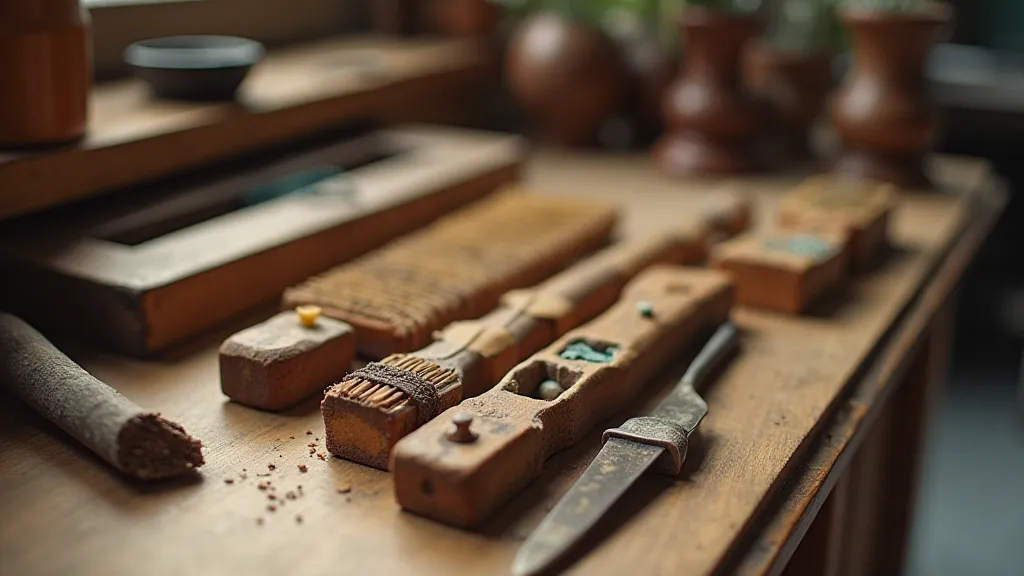Ink's Whispers: Unveiling Emotion Through Subtlety in Art and Prose
There's a peculiar intimacy one feels when holding something old. Not simply the patina of age, but a lingering whisper of the hands that shaped it, the moments it witnessed. It’s present in a well-worn leather-bound book, a grandfather's pocket watch, and perhaps most profoundly, in the swirling, unpredictable beauty of paper marbling. This isn't an art about bold statements; it's about the delicate language of suggestion, the way color, form, and a touch of chance can evoke a spectrum of emotions with astonishing subtlety. It’s an art that speaks volumes through silence, much like the nuanced prose of a master storyteller.
A History Etched in Swirls
Paper marbling, or *Ébruitage* as it was called in France, boasts a history as layered and complex as the patterns it creates. Its origins are somewhat elusive, though most historians trace it back to 17th-century Europe. Some believe it evolved from Islamic marbling techniques, *abaq*, which were used to decorate textiles and book covers. These early forms were far more functional – often concealing blemishes or imperfections – than the artistic pursuit we recognize today. The process arrived in Europe, finding particular favor in England and France, where it quickly became a beloved pastime of the aristocracy.
What’s fascinating is that the appeal wasn't just in the final product. The process itself held a certain meditative quality. Imagine a parlor filled with the scent of alum and carrageenan, the soft murmur of conversation, and the quiet focus of those meticulously floating colors across the surface of the water. It wasn’t a frantic, demanding art form; it was an invitation to slow down, to observe, and to surrender to the unpredictable dance of ink and water.

The Alchemy of Color and Water
The heart of paper marbling lies in the preparation – a delicate balance of chemistry and intuition. Traditionally, a bath is created using alum, which acts as a mordant, allowing the pigments to adhere to the paper. Carrageenan, a seaweed extract, is then added to thicken the bath, allowing the pigments to float on the surface. This is where the artistry truly begins.
Different pigments behave differently. Some spread readily, creating broad washes; others form tight, detailed patterns. The choice of pigments isn't arbitrary; it's guided by the desired emotional tone. Cool blues and greens often evoke a sense of tranquility or melancholy. Warm reds and golds can convey passion or joy. The beauty isn't just in the individual colors, but in their interaction – the way they bleed into one another, creating unexpected harmonies and dissonances.
I remember my grandfather, a quiet man of meticulous habits, patiently explaining the intricacies of the process to me. He’s a collector of antique accordions, each one a testament to the ingenuity and artistry of a bygone era. He treated marbling with the same reverence, emphasizing the importance of observing the bath, understanding how the pigments reacted, and being prepared to adapt to the unexpected. "It's a conversation with the materials," he's always said, "a listening more than a dictating."
There's a poignant parallel here between marbling and the care of antique accordions. Both involve delicate restoration, a deep understanding of the materials, and a respect for the original intent. One attempts to preserve the resonance of music; the other, the visual poetry of color. Both demand patience, a keen eye, and a willingness to embrace imperfections – the tiny cracks in the varnish, the subtle discolorations, the unique character marks that tell a story of time and use.
Beyond the Surface: Conveying Emotion
The true skill in paper marbling isn’t simply about creating pretty patterns; it’s about using those patterns to evoke specific emotions. Think of a Japanese ink painting – a single brushstroke can convey a vast landscape, a profound feeling. Similarly, a carefully crafted marbling design can speak volumes about loss, hope, resilience, or wonder. It's about understanding the psychology of color and form.
The beauty of this subtlety lies in its ambiguity. It allows the viewer to project their own experiences and interpretations onto the artwork. A swirl of dark blues and purples might evoke sadness in one person, while another might see a sense of mystery and intrigue. There's no right or wrong answer; it’s a personal journey of emotional discovery.

The Collector’s Eye and the Gentle Touch
Collecting antique marbled paper offers a unique window into the past. Each sheet carries the fingerprint of its creator and the echoes of a specific era. Look for signs of age, such as deckled edges (the feathery, uneven edges of handmade paper), watermarks, and subtle variations in color. These imperfections aren't flaws; they are testament to the paper's history.
Restoring marbled paper is a delicate process. Avoid harsh chemicals or aggressive cleaning methods. Gentle surface cleaning with a soft brush is often sufficient. The goal isn’t to erase the history of the paper, but to stabilize it and protect it from further deterioration. Much like carefully cleaning a bellows on an antique accordion, preserving the original character is paramount.
Consider the fragility of these creations. They are whispers from the past, ephemeral glimpses into a world of artistry and quiet contemplation. It's a reminder that true beauty isn’s always about grand gestures; sometimes, it’s found in the subtle nuances, the unexpected harmonies, and the gentle touch of an artist’s hand.

Ultimately, the art of paper marbling transcends mere technique. It is a journey of self-discovery, a meditation on the beauty of imperfection, and a celebration of the subtle language that speaks to the soul.





